The synagogue at Kfar Nahum – Capernaum is only one of many in the Galilee.
During a hike in the Upper Galilee, we came upon an ancient synagogue in the Biriya Forest.
An archeologist was working on the restoration and he explained that there were dozens of ancient synagogues in the Galilee. The reason is that after the Romans destroyed the Temple in Jerusalem by the Romans, many Jews fled to the safety of the remote hills of the Galilee. There, they built many new villages, each with a community synagogue.
On the way back to Tiberias, we decided to stop at what I had always considered a “Christian” site. Capernaum.
Capernaum is Kfar Nahum
The Christian Bible refers to the village by it’s Greek/Latin name which is an adulteration of the original Hebrew name for the village… “Kfar Nahum,” or the Village of Nahum.
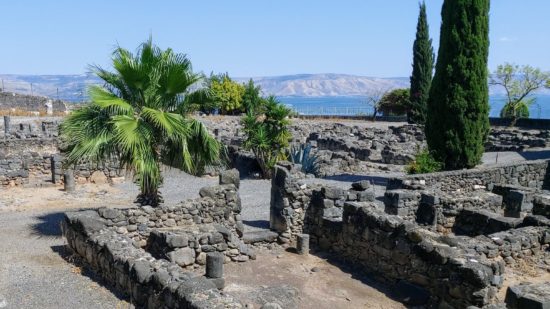
Ruins of basalt homes of Kfar Nahum (Capernaum) with the Kinneret and Golan Heights in the background
Jews from the Tribe of Naftali originally established the village on the northern shore of Lake Kinneret (Sea of Galilee) during the Hasmonean Period (between 140 and 37 BCE).
It was a fishing village, and the houses were built from locally quarried black volcanic basalt stone.
Kfar Nahum was continuously inhabited until the 11th century CE and had a population of about 1500 people.
4th Century Synagogue
They made the synagogue from large blocks of white limestone mined from from distant quarries (see above).
It’s light color makes a stunning contrast with the other buildings made of dark volcanic basalt rock.
A large carved stone lintel stands at the entrance to the building.
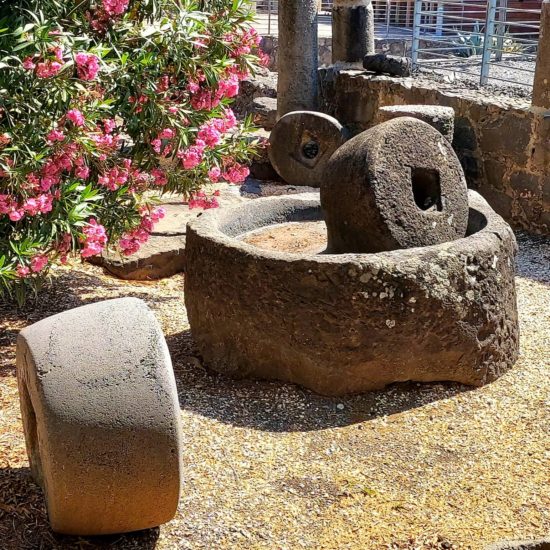
Ancient Olive Press at Kfar Nahum
Ancient Olive Press
While we were there, my olive eye spied some ancient stones of an olive press.
Local farmers would insert a wooden axel into the vertical stone. Then they would fasten the other side of the axel to the back of a donkey.
After they place olives on the horizontal stone, they would encourage the donkey to walk in a circle, thereby crushing the olives and producing the oil!
Here’s another ancient olive press from the time of the Maccabees!
If you would like some pure extra virgin olive oil from the Galilee… click here now to learn more!
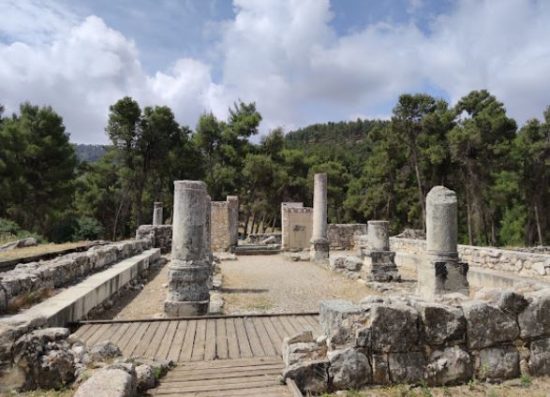
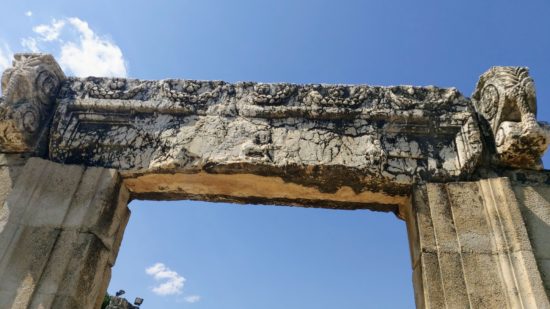
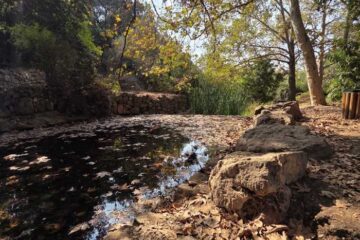
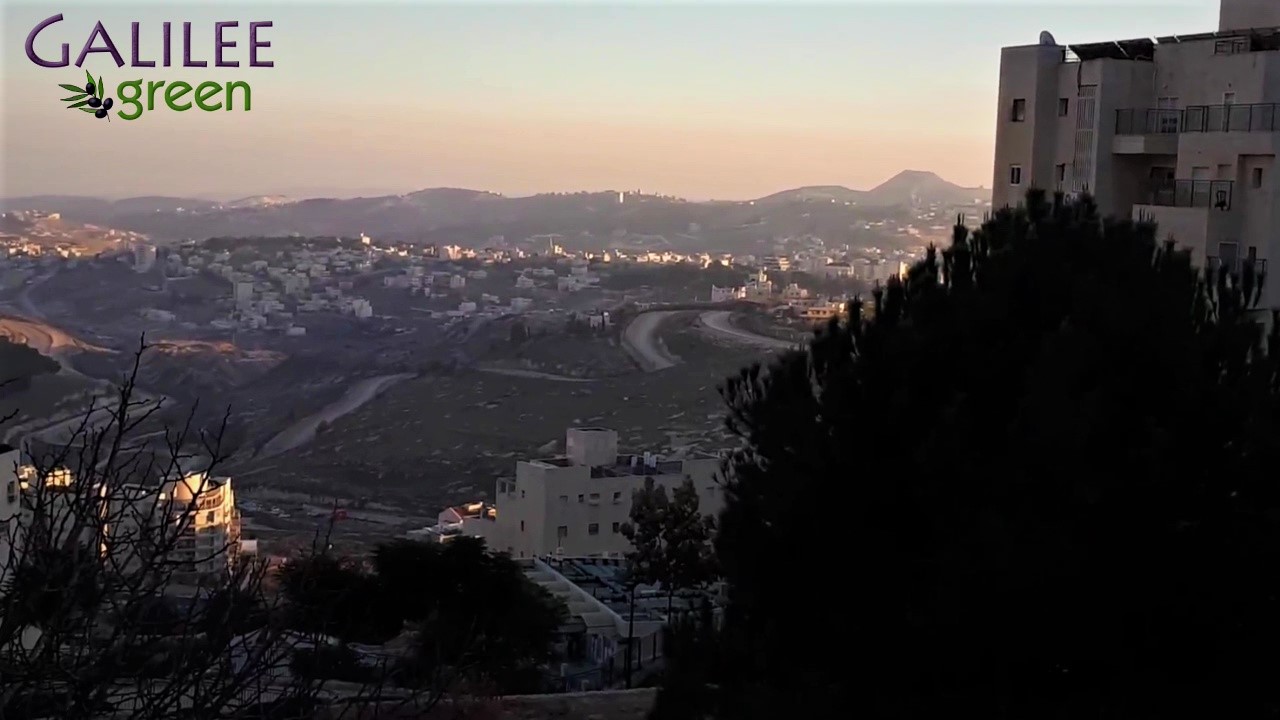
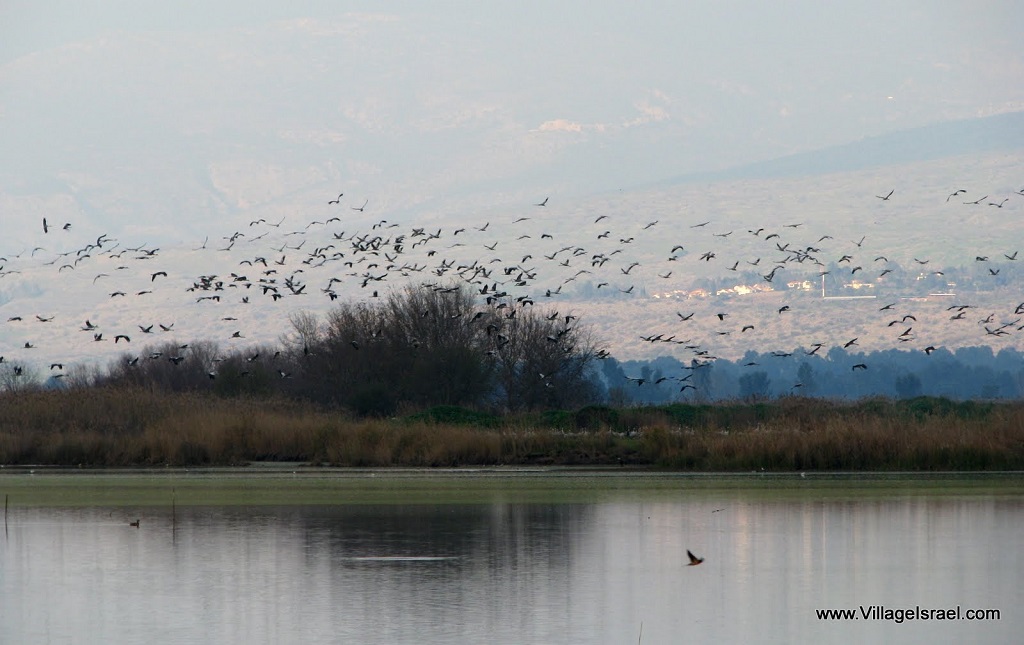

1 Comment
Sharon Casias · March 1, 2024 at 5:27 am
Your photos are so good! It helps make up for my canceled tour. I hope to come see it someday. Thank you!